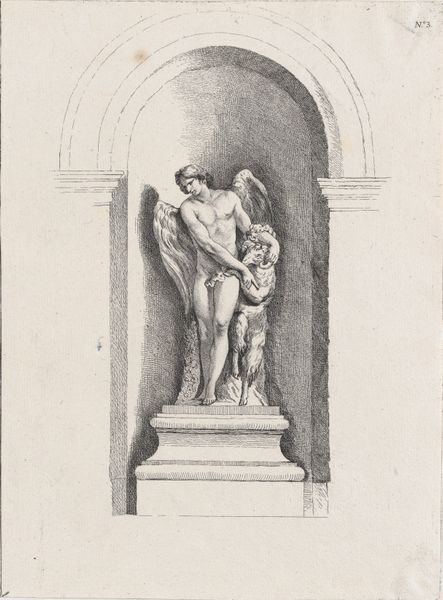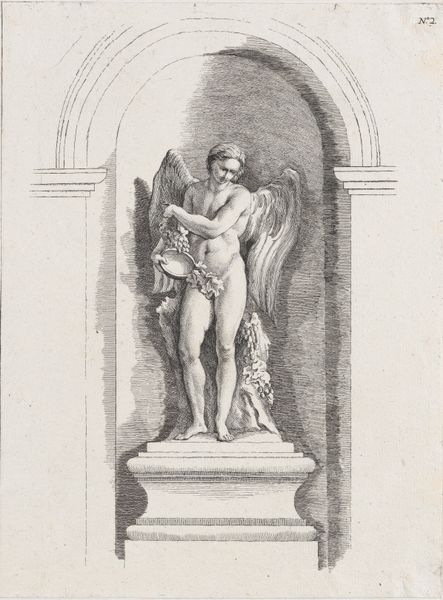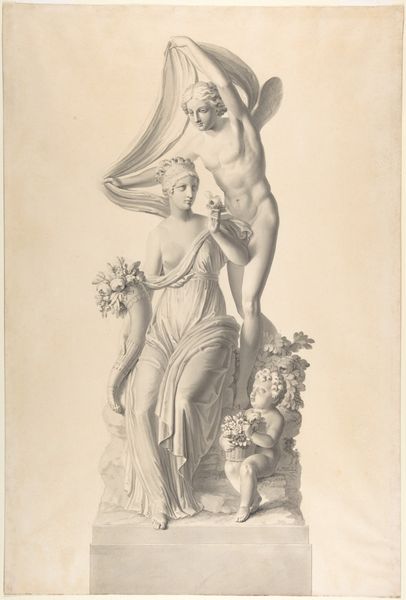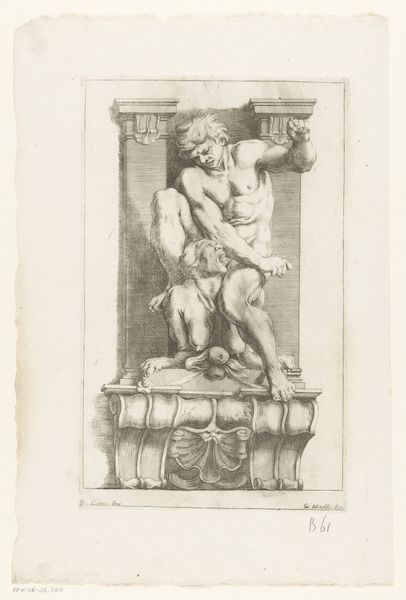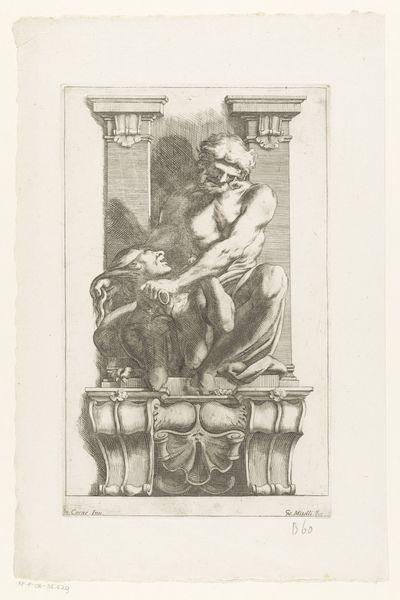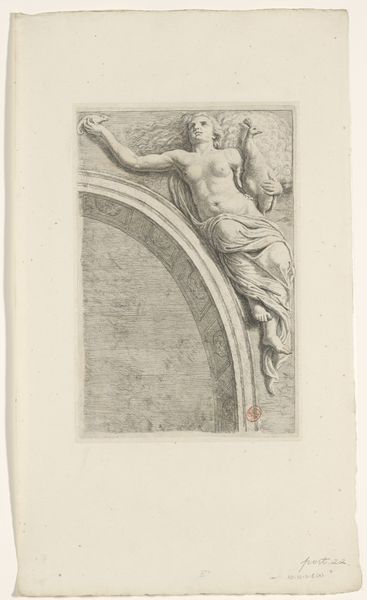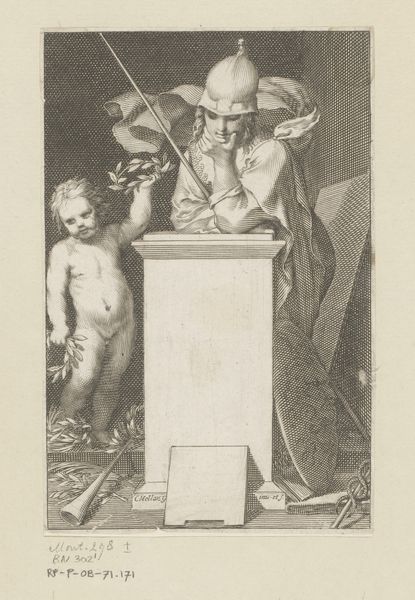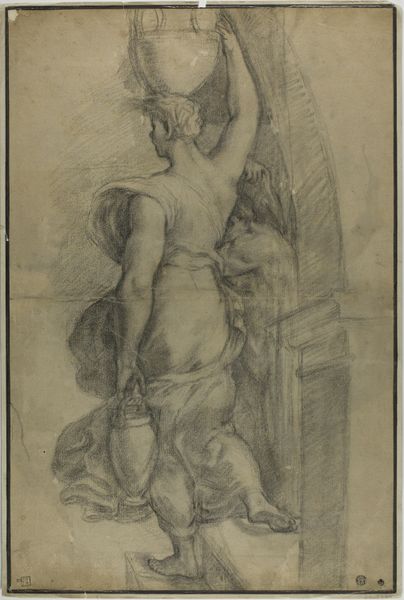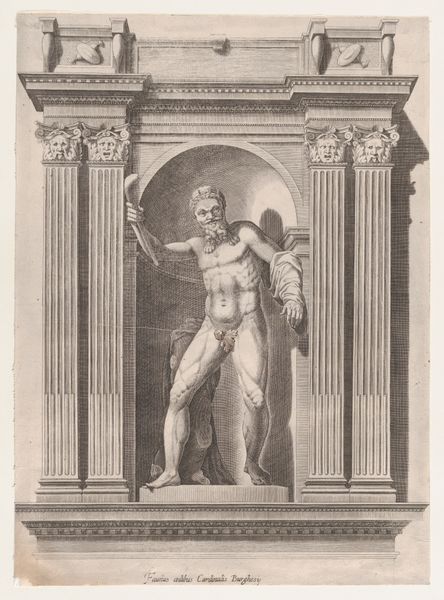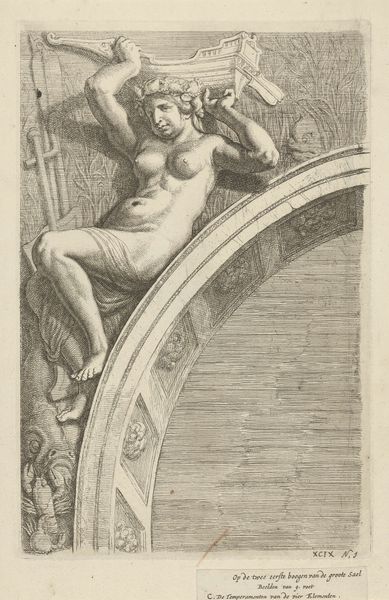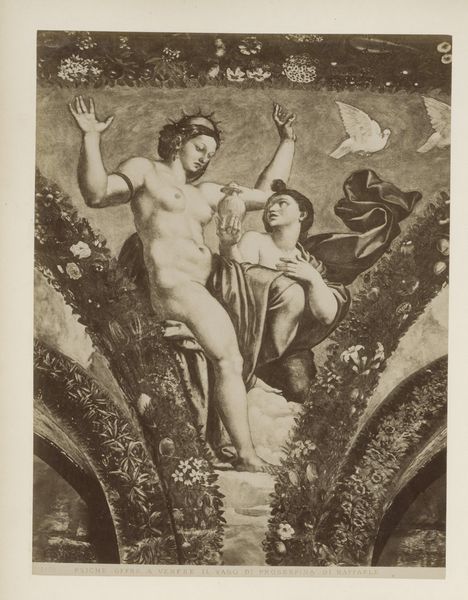
Standing male angel looking up and holding a flute; after Fontaine des Quatre-Saisons (Paris) 1745 - 1800
0:00
0:00
Dimensions: Sheet (trimmed): 11 in. × 8 1/16 in. (28 × 20.5 cm)
Copyright: Public Domain
Curator: Here we have an engraving, likely from the late 18th century, titled "Standing male angel looking up and holding a flute; after Fontaine des Quatre-Saisons (Paris)." The piece resides here at the Met. Editor: My first impression is one of delicacy and, paradoxically, a kind of awkwardness. The angel is nude but posed in this rather contorted, almost self-conscious way. The sharp, precise lines belie the ideal of angelic grace, and, instead, it offers me something quite complicated. Curator: The artist, alas, remains anonymous, yet this work still speaks volumes about the artistic milieu from which it emerged, a world steeped in the aesthetic values of the Baroque era and responding to evolving cultural values of Enlightenment Paris. We should also observe how, for instance, even angels were gendered as exclusively male figures in visual arts, reflective of larger social and power structures. Editor: Agreed. But let's also consider the material processes at work. This is an engraving, which means laboriously incising an image onto a metal plate, a deeply repetitive and craft-based activity, a step removed from high art's so called spontaneous expression. Note, for instance, the variations in the mark making – from closely clustered, creating tonal value, and wider areas left with much thinner marks which, although perhaps invisible to the casual observer, affect perception of volume and texture, too. Curator: It invites critical questions: why depict an angel holding a flute in such a human, vulnerable state? What statement, if any, did it seek to make in relation to masculinity and divine status? Or, could it be perceived in light of today's cultural context of queer readings into the history of art and architecture. Editor: Right, we see an interesting contradiction between the apparent grand subject matter and the intricate handwork of the engraving. Was this perhaps originally intended as a popular print, something to be widely distributed and consumed, or part of an architectural reference resource. The level of detailed engraving required in the plumes of wings suggest this image’s market demanded certain finesse. Curator: It does leave a lasting impact. A confluence of grace and complexity, isn't it? Editor: A compelling snapshot into 18th-century image production and ideological formation that invites a re-examination of cultural beliefs about identity, faith, and art itself.
Comments
No comments
Be the first to comment and join the conversation on the ultimate creative platform.

